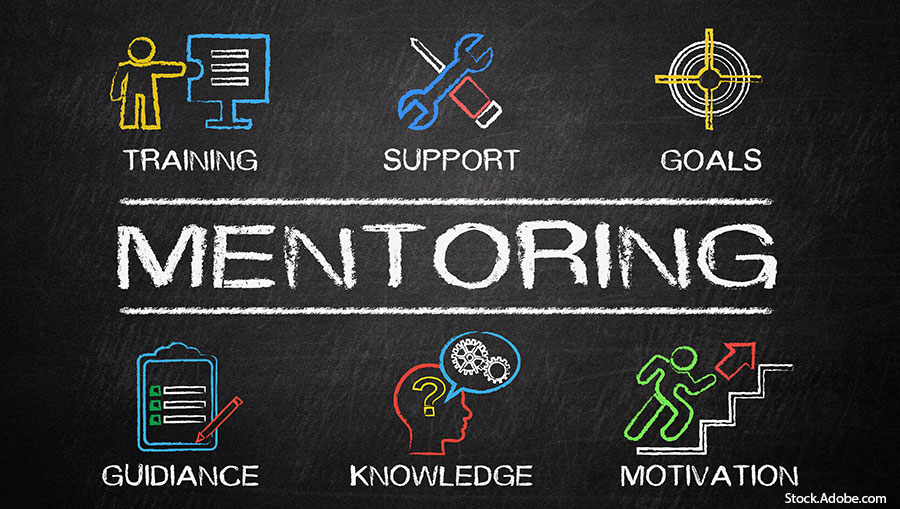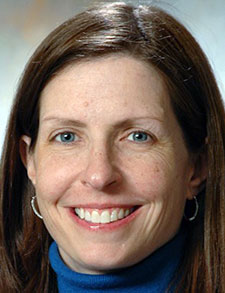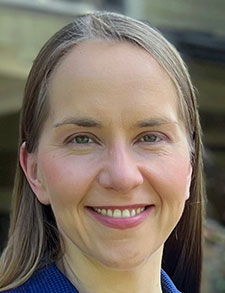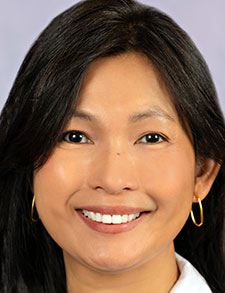 Mentorship has been shown to have numerous benefits for mentees such as increasing confidence, mitigating burnout, improving physician retention, and successful career development.1 According to SHM’s State of Hospital Medicine Report, annual hospitalist turnover for both adult and pediatric hospitalists is high. It’s been rising, nearly doubling for adult hospitalists, from 6.9% in 2016 to 11.7% in 2023.2 Although reports vary in the monetary cost of physician turnover, high turnover can have downstream effects on morale, burnout, and group culture, which emphasizes the impact of mentorship for all hospitalists.3,4 While the importance of mentorship is frequently discussed, it can be difficult for individual hospitalists to navigate the numerous forms of mentorship to find relationships that work for their varied needs.
Mentorship has been shown to have numerous benefits for mentees such as increasing confidence, mitigating burnout, improving physician retention, and successful career development.1 According to SHM’s State of Hospital Medicine Report, annual hospitalist turnover for both adult and pediatric hospitalists is high. It’s been rising, nearly doubling for adult hospitalists, from 6.9% in 2016 to 11.7% in 2023.2 Although reports vary in the monetary cost of physician turnover, high turnover can have downstream effects on morale, burnout, and group culture, which emphasizes the impact of mentorship for all hospitalists.3,4 While the importance of mentorship is frequently discussed, it can be difficult for individual hospitalists to navigate the numerous forms of mentorship to find relationships that work for their varied needs.
Informal versus formal

Dr. Fromme
Historically, many mentorship relationships occurred outside of organized programs, where the relationship developed intentionally or organically out of personal connections. To maximize the benefit of informal mentorship, Barrett Fromme, MD, MPHE, professor of pediatrics at the University of Chicago Pritzker School of Medicine in Chicago, emphasizes the need to be intentional about seeking out these relationships. Like many things in life, she points out that “[a great mentor] isn’t just going to fall into your lap.” For hospitalists who are more advanced in their careers, making connections with other hospitalists nationally can provide mentorship and peer cohorts to navigate the ever-changing hospitalist landscape. These informal mentoring relationships are frequently based on genuine connection and trust without set rules, allowing for increased flexibility for mentors and mentees.

Dr. Schaefer
While personal connections are invaluable, informal mentorship may not work for everyone and many groups across the nation have created formal mentorship programs. Julie Schaefer, MD, department chair of hospital medicine at Regions Hospital in St. Paul, Minn., notes, “part of the impetus behind starting our mentorship program was a desire to make mentoring relationships accessible to all. We know that underrepresented groups in medicine are less likely to seek out mentorship on their own. Formal mentorship programming, while it doesn’t meet every mentorship need in the department, can help build towards a culture where mentorship is sought, valued, and expected.”
Traditional versus peer

Dr. Massart
When thinking about mentorship, people traditionally think about a one-on-one interaction between a senior mentor and junior mentee where the senior mentor typically has expertise in an area that the mentee is interested in. However, in hospital medicine, where many hospitalist groups have rapidly expanded in the past 10 years with numerous junior faculty members needing mentorship, traditional mentoring may place increased demands on a small pool of quality senior mentors.
The division of hospital medicine at Emory University is the largest in the nation, with more than 250 hospitalists across multiple sites. Providing faculty development and strong support for potential mentors has helped them expand their pool of mentors to keep up with their rapid growth in junior faculty, says Annie Massart, MD, assistant professor at Emory University School of Medicine in Atlanta. She notes that many hospitalists have significant expertise and wisdom to share, but don’t want to be a disservice to more junior faculty. With formal training built into their mentorship program, they are able to help faculty gain skills that allow them to feel comfortable being mentors. Lien Le, MD, MBA, associate chief medical officer at Tampa General Hospital in Tampa, Fla., also recommends thinking outside of the box and looking throughout the department to connect hospitalist mentees with senior faculty outside of the group.

Dr. Le
In comparison, peer mentorship is where individuals of similar ages or experience levels are paired together. Because peer mentors are at similar life stages, they frequently face similar work challenges and can provide support and a different perspective. Eric Signoff, MD, FACP, associate professor at the University of California Davis School of Medicine in Sacramento, Calif., notes that “… there’s a lot of growth that happens early on as a hospitalist and there is an enormous amount of wisdom that early career hospitalists can provide to their peers.” One of the benefits of peer mentorship is that frequently the only experience necessary is the mentor’s lived experiences.
One-on-one mentoring
Even after considering the type of mentor, there are different forms of mentorship models to explore. One-on-one mentorship is a traditional model of mentoring that is mentee-focused and frequently personalized to their needs to help them advance in their career. This individualized approach can be powerful, allowing for a deeper focus on the mentee and the formation of a close relationship, but often depends on finding the right mentor-mentee fit. In formal mentorship programs, hospitalist groups typically consider a combination of professional and personal components when creating matches.
While traditionally thought of as a relationship between a senior mentor and a junior mentee, near peers can also engage in effective one-on-one mentorship. At Regions Hospital, they moved to a one-on-one mentorship model for all incoming hospitalists when they had an influx of new hires: They paired new hospitalists with a more experienced peer for their first year with the group. According to Dr. Schaefer, while some of the focus of this relationship can be situational related to the logistics of starting a new job, the near-peer aspect of the partnership allowed for the mentor to create a trusting relationship with their mentee, helping them set career goals and develop leadership skills.
Group mentoring

Dr. Signoff
In comparison, group mentorship involves three or more individuals and can be more powerful in fostering a sense of inclusion and collaborative growth. This can be organized with one or more senior mentors facilitating and guiding the group, helping one mentor reach and impact more mentees in a shorter amount of time. Dr. Massart shares that group mentorship can also be a more casual introduction to mentorship for some hospitalists who may not feel ready for traditional dyad mentoring. Because her group has multiple practice sites, individual locations facilitate local mentorship groups that focus on site-specific interests and challenges, while also allowing hospitalists to form stronger bonds with their peers.
They also used group mentorship to support their mentors at Emory University, where mentors come together for quarterly calls to discuss mentorship topics, work through difficult scenarios, and learn from their peers. Dr. Massart adds that while more experienced mentors can be sources of wisdom, individuals bring a diversity of backgrounds and perspectives. Having a multi-element structure with group mentorship in addition to a traditional dyad partnership helps them serve the diverse needs of their different faculty.
Situational mentorship
When Dr. Le was a young hospitalist, she felt alone in her journey, which inspired her to develop a robust onboarding mentorship program to give new hires an on-the-job mentor to provide the support they need to successfully transition to joining the group. Not always recognized as mentorship, situational mentorship is typically a short-term relationship surrounding a specific situation. For hospitalist groups, this frequently manifests during the onboarding process for new hires but may also work well to support hospitalists in research and other scholarly activities. This type of mentorship program allows hospitalist groups to select from a larger pool of potential mentors with a limited time commitment. This is also a form of mentorship where Dr. Le thinks that in some programs, advanced care practitioners and physicians could have joint mentorship programs and benefit from shared resources and knowledge.
Speed mentoring
Speed mentoring is a form of mentorship modeled after speed dating, where mentees rotate between mentors for short, focused sessions. Dr. Signoff found that holding a speed-mentoring event was particularly useful to complement their peer-mentoring program and allow hospitalists to engage with a senior mentor in addition to their near-peer mentor. This allows a small group of senior hospitalists with valuable expertise to reach a larger number of junior hospitalists and to create space for impactful mentorship advice without the pressure of long-term relationships or scheduled meetings. He emphasized the value of having a cabinet of mentors rather than relying on just one person and used speed mentoring as a means to help young hospitalists connect with senior faculty across the hospital system.
It can work well to have events organized around a specific theme or topic, such as education or research, which allows mentees to gain different perspectives on that topic as they rotate through various mentors. For those who want to expand their mentorship pool beyond their immediate hospital system, many organizations host speed-mentoring sessions both throughout the year and at national conferences, which is a great avenue to connect with hospitalists across the nation. This can be a way to expand your team of mentors, get perspectives outside of your own institution, and network with leaders across the nation.
Virtual mentoring
With the shift to more virtual meetings and busy schedules, some groups have turned toward virtual mentoring. There are a variety of apps and software that can be used for virtual communication that also expands the reach of mentor pairings beyond the immediate local hospitalist group. This can be an inclusive option for hospitalists who prefer to connect virtually or for hospitalist groups that have multiple practice sites.
Some national organizations have also created virtual mentorship groups. For example, Women in Pediatric Hospital Medicine developed a virtual group-mentorship program for pediatric hospitalists where a group of near peers has facilitated monthly meetings structured around specific topics to help provoke discussion. Having a virtual format allows hospitalists across the nation to form mentorship groups, make meaningful connections, and find a safe space to reflect on institutional challenges.
Creating a mentorship program
The logistics of coordinating a new mentorship program for a hospitalist group can be daunting. However, in addition to supporting individual hospitalists, a formal mentoring program can help hospitalist organizations demonstrate their commitment to faculty development and create a culture where hospitalists feel valued and supported. Dr. Fromme recommends starting by reflecting on your group, optimizing resources, keeping your aims narrow to start, and slowly building with time. For example, peer mentorship may work better for groups with a large cohort of junior hospitalists.
In her current position, Dr. Le can now provide financial support for a position focused on mentorship and professional development for their hospitalist group, but when she started her first mentorship program, she needed to gain support from her section chief. Her recommendation to hospitalists looking to find support from senior leadership is to emphasize the importance and value of a strong mentorship program, particularly the return on investment. Strong mentorship can help hospitalists provide safer care as they transition to a new program as well as improve recruitment of quality physicians.
In addition to the work necessary to build a mentorship program, continued success relies on ongoing programmatic support. Although the mentorship program at Emory University has been present for more than eight years, having someone dedicated to the administration and growth of the mentorship program has allowed them to have continued success, according to Dr. Massart. She emphasizes that there is a tremendous return on investment when a system invests in mentorship, acknowledging that mentorship can improve retention and decrease burnout, as well as help hospitalists find increased success in scholarship and engage in research.
While formal mentorship programs have numerous benefits, it is also important to recognize that they may not be sufficient to meet every need. Mentorship relationships can be transient or longer lasting, but individuals frequently benefit from having a diverse group of mentors who can help them navigate the various aspects of their careers. With an intentional approach to mentorship, casual acquaintances can become strong mentors and formal mentorship programs can ease some of the challenges in exploring potential mentors.

Dr. Shi
Dr. Shi is an adult hospitalist, assistant clinical professor, and director of student-run clinics at UC Davis Health in Sacramento, Calif.
References
- Lin D, Schmidt RM. Strategies to improve mentorship and foster career advancement in academic hospital medicine. J Gen Intern Med. 2022;37(10):2556-8.
- SHM’s State of Hospital Medicine Report. Society of Hospital Medicine website. https://www.hospitalmedicine.org/practice-management/shms-state-of-hospital-medicine2. Published August 2023. Accessed August 2, 2024.
- Frenz, D. The staggering costs of physician turnover. Today’s Hospitalist website. https://todayshospitalist.com/staggering-costs-physician-turnover/. Published August 2016. Accessed August 2, 2024.
- Jones YO, Shah SS. The pernicious problem of physician turnover in hospital medicine. J Hosp Med. 2022;17(10):856-7.